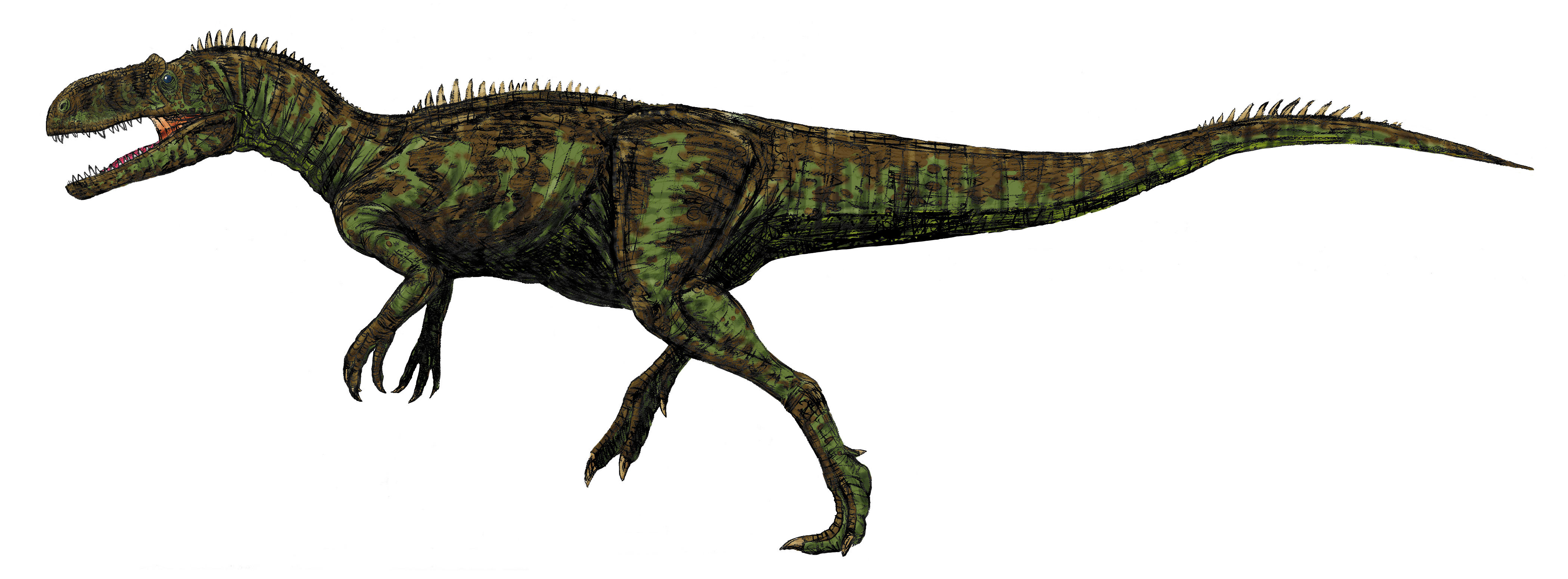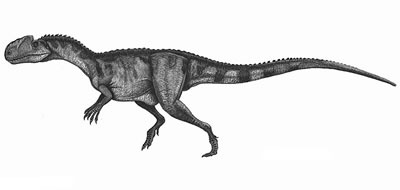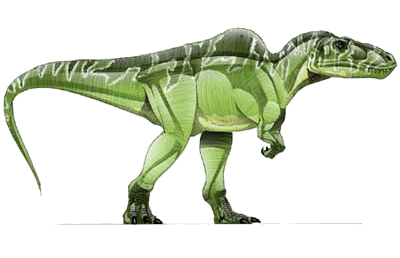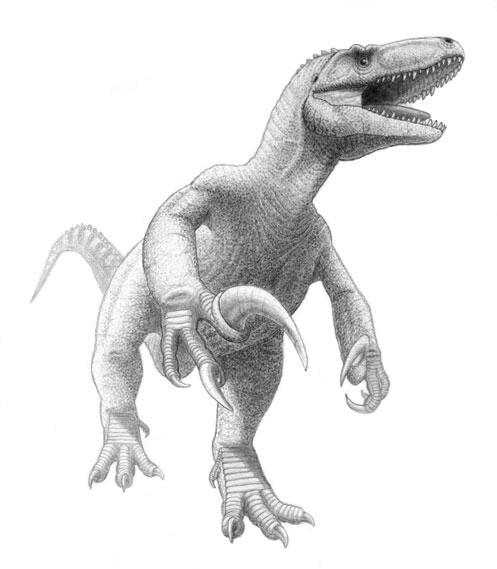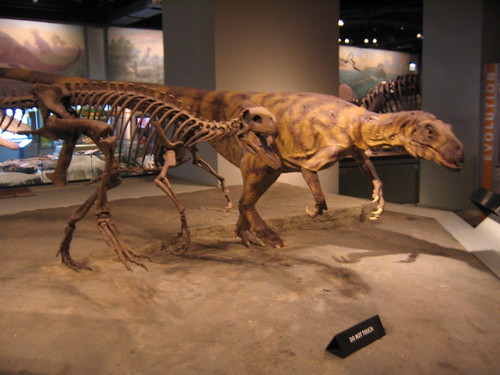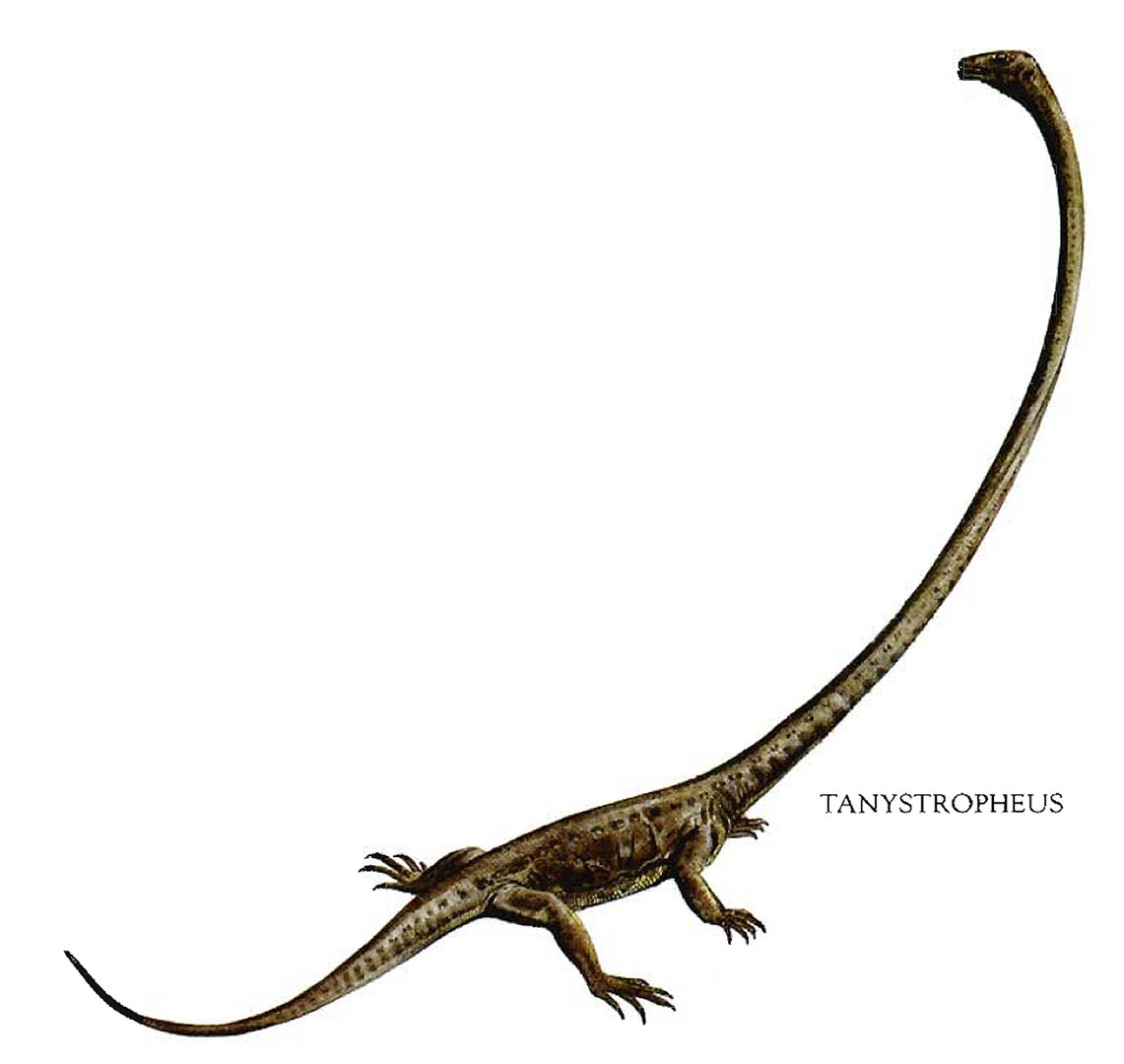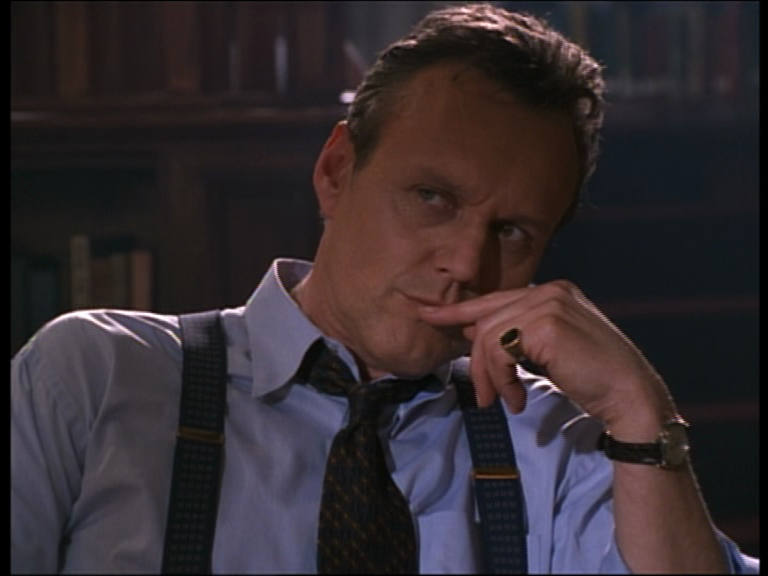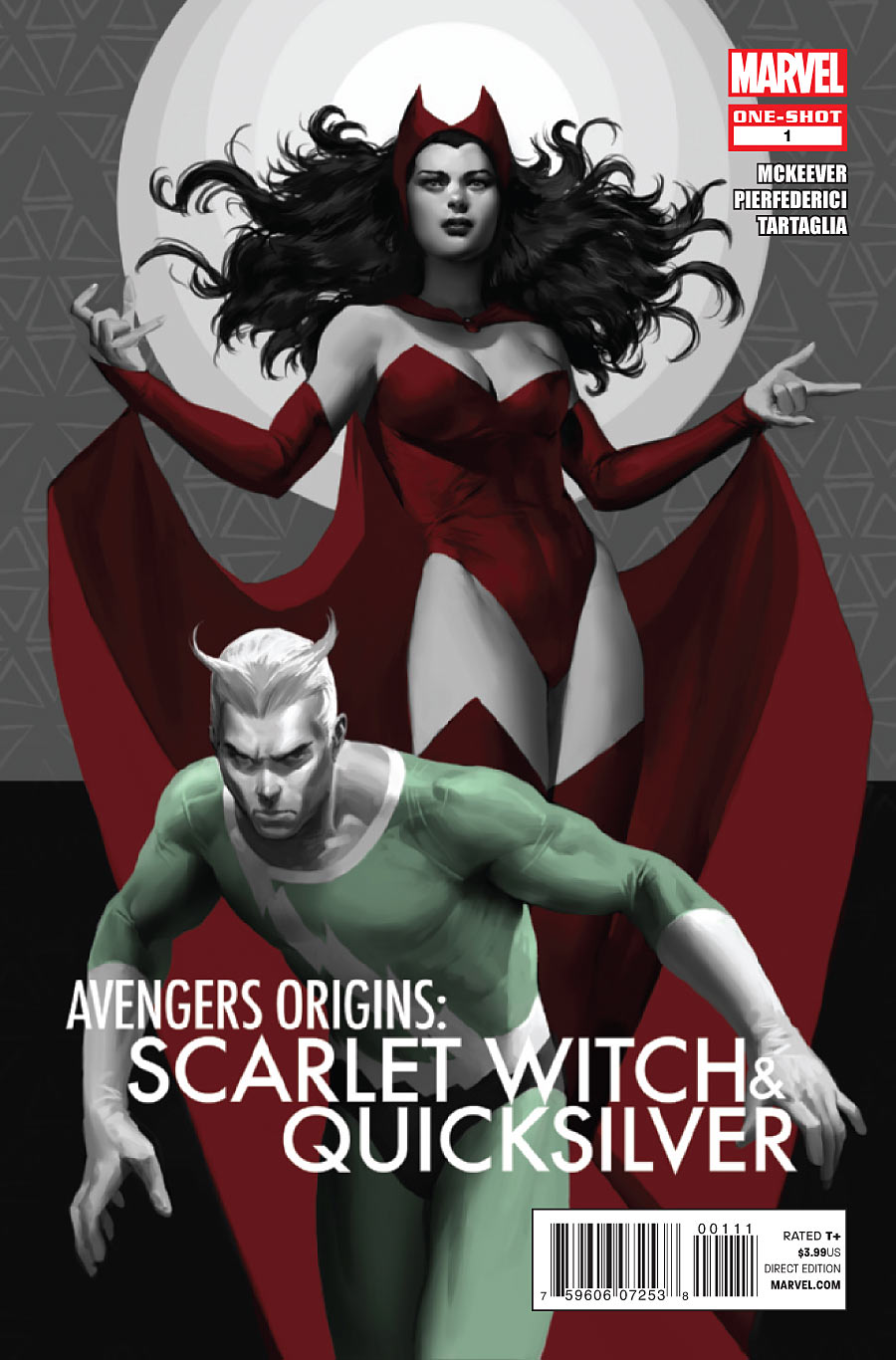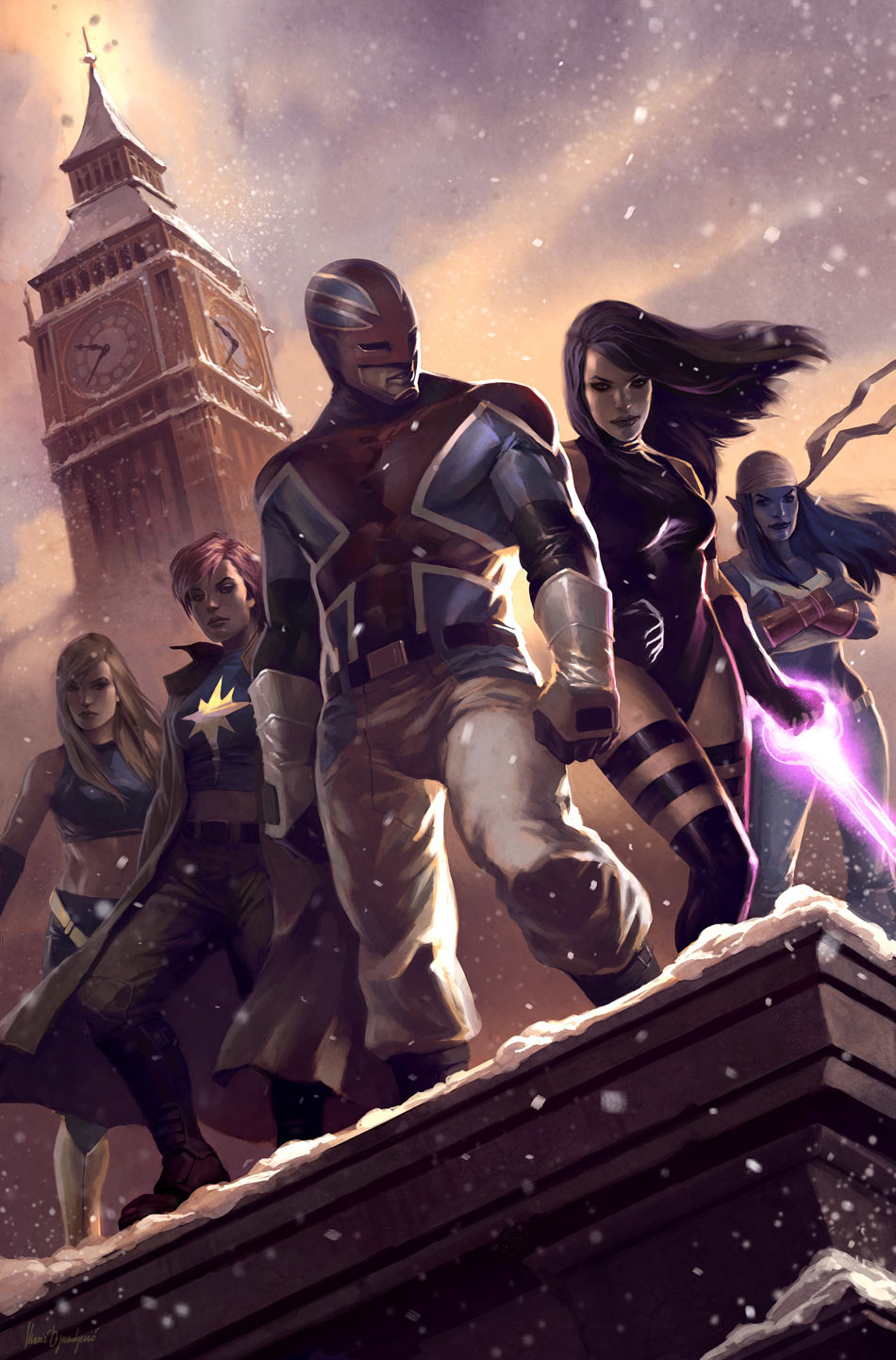Jack Horner, discoverer of the Maiasaurus, author of the book
How to Build a Dinosaur, and consultant to all
Jurassic Park films to date (and partial inspiration for the character of Alan Grant) has said that in
Jurassic Park 4 film, a new dinosaur will be introduced, saying, "I can’t actually tell you who that will be, but you’ll want to keep the lights on after you see this movie." Horner understands the potential for increasing the general knowledge of specific species through a
JP film is incredible, saying, "
Jurassic Park created the velociraptor." It certainly made raptor a household name, and the sequel (which isn't really a
Jurassic Park film, but ask me about that later. I'm busy now) stuck with the T-rex and raptor formula.
The third film attempted to try something new, by using (and completely misrepresenting) the Spinosaurus, which to be fair is a visually interesting animal. Unfortunately, the Spinosaurus never caught on in the way the raptors did, and so in
Jurassic Park 4 they're going to try it again. The question becomes, with between 300 and 700 species indentified, which terrible lizard will be making their big screen debut?
After the jump, I run through a list of possible suspects.
When developing this list, I understood that Universal is undoubtably looking for a predator to replace or add to the T-rex and raptors. And that they would probably prefer a theropod. As such, my list reflects this assumption, and the majority of choices, but not all, are theropods. I will be the first person to congratulate and celebrate Universal and Amblin' if they go in another, unexpected direction, but I doubt they will. The public are comfortable with a certain image, and the producers seem unwilling to be adventuresome with overturning that image (which also means that despite all these theropods,
none of them will have feathers).
Second, I haven't included any species that share direct families or similar features to any prominent dinosaurs in the first three films. So, no other kinds of raptor, and nothing with any massive frills or crocodilian snouts, which is a shame because
Suchomimus and
Irritator are fantastic creatures. I've also illuminated the more well known alternatives, like Allosaurus or Albertasaurus, as while these would be the next most logical choices, they are already well known, and less likely to be surprising to the audience.
AcrocanthosaurusNative Time: Early Cretaceous, American South
Size: 38 feet long, 6 tonnes
Why: Currently, the second largest theropod ever discovered, behind the Giganotosaurus, so from a sheer size perspective it stands a chance. The Spinosaurus, aside from the unusual appearance, was chosen specifically because it was larger then the T-rex. Acrocanthosaurus also had a hump, formed by over sized vertebra along the spine, not enough to create a frill, but enough to give the animal a distinct, Quazimodo-like appearance.
Chilantaisaurus Native Time: Late Cretaceous, China
Size: 25 feet long, 3 tonnes
Why: Despite
possibly being an ancestor to the Spinosaurus, I've included the animal for a couple reasons. First it occupies the size range between the 40 foot T-rex and the 7 foot raptors already in the series. Second, it had long grasping arms, which would be a distinct visual change from the iconic stub arms of the T-rex.
MonolophosaurusNative Time: Middle Jurassic, China
Size: 17 feet
Why: Another for the mid-size range, which I believe is where the new addition should fall. If the T-rex is a tank, and the raptors are infantrymen, then the ideal theropod for
JP4 would be Jeep. Mono had a fore-cranial crest, which is fancy talk for a single wedge shaped growth that ran the length of it's snout, giving it a distinct look. A cousin of the infamous Dilophosaurus (who, in an ideal world, would be in contention for
JP4, without all that frill and spit nonsense), it then already has a connection to the franchise's past.
BecklespinaxNative Time: Early Cretaceous, Western Europe
Size: 20 feet, 1 tonne
Why: Really, Becklespinax doesn't have anything the others don't. It's a more compact dinosaur then the rex, it might have had a slight spinal frill (though this is not conclusive), and filled in the ecological niche picking off the smaller sauropods of the time. I've included it here because the name is just fun to say, and something you could easily see on an action figure pack.
ConcavenatorNative Time: Early Cretaceous, Western Europe
Size: 20 feet, 2 tonnes
Why: This thing just looks odd. A couple extremely disproportionate vertebrae results in a presumed triangular hump, making this thing the camel of the Cretaceous. A meat eating camel, with claws.
MegaraptorNative Time: Late Cretaceous, South Africa
Size: 25 feet, 2 tonnes
Why: Technically, I'm not breaking my rule, as the Megaraptor is not a raptor, just misnamed. They won't use it because of the confusion with the names, but they should. Because, like the raptors, it had a single massive hooked killing claw. Unlike the raptors, it was on it's hand, essentially equipping the Megaraptor with a permanent
machete.Metriacanthosaurus/YangchuanosaurusNative Time: Middle Jurassic, England/Late Jurassic, China
Size: 25 feet, one tonne/26 feet, 3 tonnes
Why: On paper this is nothing special (aside from being, you know, a dinosaur, and therefore special anyway). But, it fits my basic criteria of being a mid-sized animal, with one important distinction: it was in the original film. Or rather, it could have been. Metriacanthosaurus was one of the names on the DNA vials stolen by Nedry, thus establishing that InGen was breeding these animals during the events of the original film. I include Yangchuanosaurus in this suggestion because, at the time of the film, the two species were incorrectly identified together (in the same way that Dienonycus was mis-merged with Velociraptor, resulting in that confusion). So it could have been either one. Something like this already happened in universe, with InGen breeding Baryonyx, and actually getting a Spinosaurus. Clearly, early nineties InGen sucked at identifying species.
MegalosaurusNative Time: Middle Jurassic, Western Europe
Size: 30 feet, 3 tonnes
Why: I include this out of sheer respect to the field of paleontology. Megalosaurus was the first dinosaur to be discovered, via a femur in 1676 in Oxford, and initially thought to belong to a race of giant men. In 1824 it was named by William Buckland, a year before the more famous Iguanodon.
CeratosaurusNative Time: Late Jurassic, North America
Size: 15 feet, 1 tonne
Why: Aside from the distinctive horn on the snout, the Ceratosaurus is already established within the film universe, appearing briefly in the third film, and being repelled by the smell of Spinosaurus shit covering the characters. The similar, in build and features, duel horned Carnotaurus, was featured in the sequel novel and had a bizarre chameleon-like camouflage ability.
ElaphrosaurusNative Time: Late Jurassic, Africa
Size: 20 feet, 500 pounds
Why: Light weight and built more like an ostrich, the Elaphrosaurus would represent a marked change to the choice of predator. Like the Spinosaurus being selected based on the difference in appearance from the T-rex, the Elaphro would represent a significant change from the raptor design. Featuring a long neck and narrow, snake like head, the Elaphro is a sprinter, and could be a terrifying new kind of threat.
SegisaurusNative Time: Mid Jurassic, North America
Size: 3 feet, 15 pounds
Why: The use of Segisaurus will have been undercut by the extensive use of the Compys in the
Lost World, of a similar shape and size, however, Segisaurus was yet another dinosaur mentioned in the original film, the name seen on
a map of the island. It is possible that what was labelled as Segisaurus was actually the Compys, yet another mistake on InGen's ever growing list.
HerrerasaurusNative Time: Middle Triassic
Size: 10 feet, 100 pounds
Why: Light weight, but built long, and with more primitive crocodilian features (along with a ridge along the snout), the human sized threat was another referred to on the map of the original park, and thus established as being present in the park despite not having been seen.
AmargasaurusNative Time: Early Cretaceous, South America
Size: 30 feet, 2 tonnes
Why: Not a predator, but a sauropod, and therefore a herbivore. However, it was smaller then most examples of the type, and had a shorter neck. What makes it stand out however is the long sharp spines running down the length of the neck, giving the animal a threatening appearance. Outside of the Brachiosaurus in the original, little to no interest has been paid to the non aggressive animals present in the park. This needs to change.
TanystropheusNative Time: Middle Triassic, Europe
Size: 20 feet, 300 pounds
Why: Not a dinosaur, but an early reptile and semi aquatic, noted for its incredibly long neck, with limited flexibility, giving it the look of a snake. Aside from the boat scene in the third film, the movies haven't explored the idea of aquatic environments at all, ignoring a host of animals who lived in or near the waters of the prehistoric ear.
KronosaurusNative Time: Middle Cretaceous, Worldwide
Size: 33 feet, 7 tonnes
Why: Not a dinosaur, but an aquatic reptile, and the top ocean predator of its age. Essentially the T-rex of the oceans, and why wouldn't that be terrifying. As much as I love watching dinosaurs run through the jungle, the prospect of
Jaws, Jurassic Park style is a tantalising thought. While neither of the establish islands have large rivers or lakes for them to inhabit, they are in fact islands, and why the animals have just swum away could be part of the plot.
LycaenopsNative Time: Middle Permian, Africa
Size: 3 feet, 30 pounds
Why: Not a dinosaur, and from the pre-dinosaur era or the Permian, the Lycaenops is an example of convergent evolution, filling the niche (and general appearance) of a wolf in the environment. Set up an inter-species rivalry on the island, between a pack of these and a pack of raptors, and establish the sort of non Human involved conflict that was teased with the T-rex and raptors in the original, and the Spinosaurs and T-rex in the third film. Territoriality should be a factor in the film.
Final Opinion: If I had my way, I'd like to see a water-focused film, with a Kronosaurus as the main adversary. Begin the film with a family of T-rex walking by the sea, a juvenile frolicking in the surf, and have the Krono
lurch out of the water to eat it, leaving the parents helpless to defend their young. It would establish the threat (like they did with the Spinosaurus in
JP3), and you're set. However, I doubt they'll deviate from the established formula that heavily (consider that the last major deviation,
aside from being insane, was shot down immediately).
So, if the movie will be jungle island based, I would favour picking a mid sized predator, to fill in the only gap left to them (compys in the small, raptors in the equal sized, T-rex in the large, and Spinosaurus in the extra large). From those listed above, I'd go with the Ceratosaurus, for being previously established but not utilised at all. Incorporate part of the
Lost World novel story points, and you've got a terrifying new creature to ingrain on the public mind.
Or, they could surprise us.


